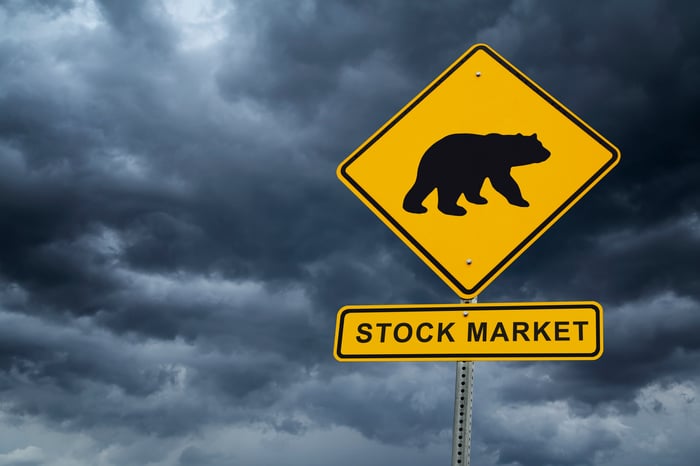The last year has been a gut-puncher for investors. All three major stock market indexes — the S&P 500, the Dow Jones Industrial Average, and the Nasdaq — plunged into bear market turf at some point in 2022. Though the market has bounced back a bit in 2023, banking failures and ongoing worries about a recession continue adding to investor jitters.
It’s understandable if you’re concerned that a bear market looms in the near future. But most investors shouldn’t lose sleep over a bear market.
The bear market lesson you can’t afford to forget
A bear market is a drop of at least 20% from the market’s recent highs. A bull market occurs when the stock market rises by 20% or more over a sustained period of time.
The big thing you need to know about bear markets, though, is that they’re unbelievably short compared to bull markets. That may come as a surprise when you’re checking your investment account and feel like the losses will never end. But of the 27 bear markets the stock market has experienced from 1929 to 2022 — as measured by an S&P 500 index drop of 20% or more — the average bear market has only lasted about 9.7 months, according to Hartford Funds research. By comparison, the average bull market spanned an incredible 2.7 years.
The S&P 500 bear market of 2022 was fairly typical, lasting 282 days or just over nine months. The bear market that preceded it in 2020, when the pandemic triggered a global meltdown, was the shortest in history, ending after just 33 days. But in the run-up to the COVID-19 crash, the S&P 500 enjoyed one of the longest bull markets in history, spanning from March 2009 to February 2020 — 3,999 days total.
The U.S. stock market has eventually rebounded from every downturn in history. Even when you account for the stock market’s most recent dips, the S&P 500 has still produced returns of over 3,600% in the past 50 years. When you look at long-term performance, even longer bear markets look like relatively small blips.
^SPX data by YCharts.
How should you prepare for a bear market?
Maintaining a diversified portfolio and practicing dollar-cost averaging are two of the best ways to prepare for a bear market. A diversified portfolio reduces your risk of being over-invested in a hard-hit sector, i.e., tech stocks in 2022 or real estate and financials in 2008. Dollar-cost averaging, which is when you regularly invest the same amount at scheduled intervals regardless of market performance, helps you lock in some of those low bear-market prices.
Investors who have a ways to go until retirement may want to set aside extra money to invest even more when the market tanks. That’s not to say you should attempt to time the market, as we’ll only know in hindsight when the market reached a bottom. But you might set aside excess cash so you can invest more, say if the S&P 500 dips beneath a certain level or if a stock falls below a predetermined price.
But there’s no way around the fact that a bear market is far more painful for those nearing retirement than it is for someone with decades of investing ahead. That’s why older investors should revisit their portfolio allocation to make sure they’re taking an appropriate level of risk. Replacing some high-growth investments with safer ones, like blue chip stocks and bond ETFs, is typically a good move when retirement is in sight.
For most people, though, the best response to a bear market is to simply keep investing as usual.
